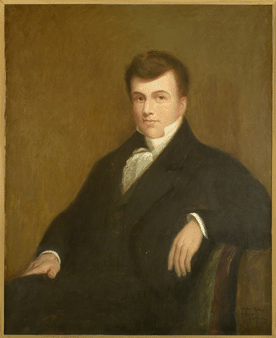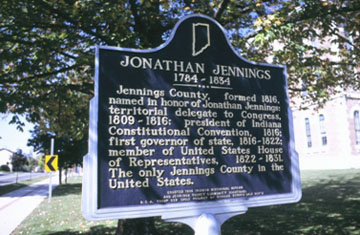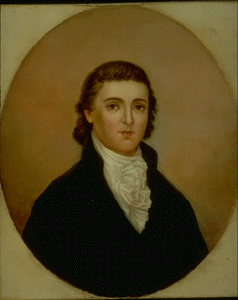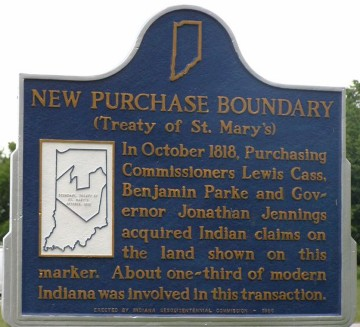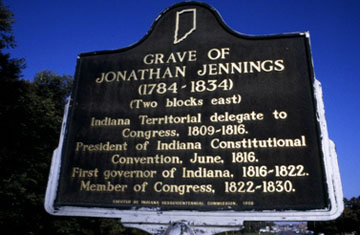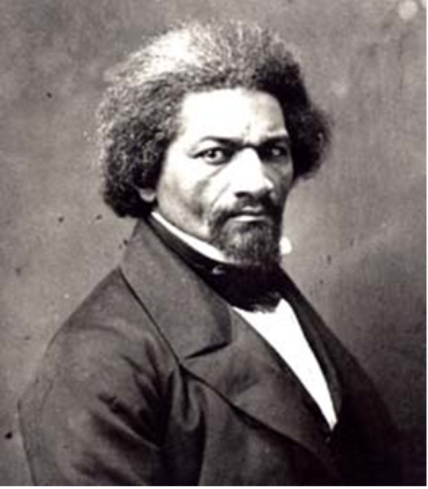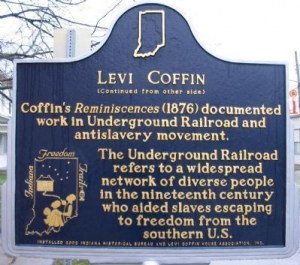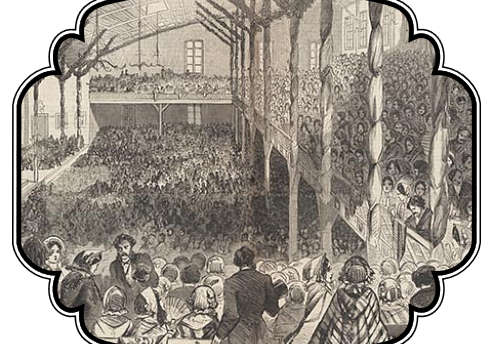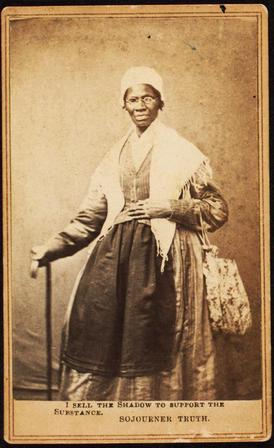
In May of 1861, as men throughout the state answered Governor Oliver P. Morton’s call for volunteers to suppress the rebellion, well-known abolitionist and evangelical speaker Sojourner Truth visited Indiana to speak in support of the war. This would ultimately lead to her arrest. The reformer was born a slave in Ulster County, New York, sometime in the late 1790s, and named Isabella. She became free in 1827 under New York’s gradual emancipation law, and took the name Isabella Van Wagenen, after her last master. That year, she had a religious conversion experience and became a Methodist. In June, Isabella Van Wagenen was inspired to change her name to Sojourner Truth and became an itinerant preacher. She settled among the Northampton Association and for the remainder of her life spoke widely on behalf of spiritual, anti-slavery, feminist, and temperance causes.
Sojourner Truth first visited northeastern Indiana in 1858, probably because it was not far from her new home in the Harmonia community near Battle Creek, Michigan. By setting foot in Indiana she broke the law, as Article 13 of Indiana’s 1851 Constitution provided that “No negro or mulatto shall come into or settle in the State, after the adoption of this Constitution.” This was of no concern for a woman of her ideals and determination. It was at the small town of Silver Lake in Kosciusko County that a hostile crowd insisted that she was really a man in disguise. Challenged to reveal her breasts to women of the audience, she uncovered her breasts for the entire audience, saying that she “had suckled many a white babe.” Accounts of this “symbolic rape,” as modern scholars describe it, were published both locally and in the nation’s leading abolitionist newspaper, William Lloyd Garrison’s The Liberator.
Her 1861 appearance at the Steuben County courthouse in Angola was, according to abolitionist accounts, disrupted by a drunken mob, which pushed and cursed her, threatening tar and feathers or even worse. Reports noted that she made a dramatic figure: unusually tall (some said nearly six feet), thin, very dark complexioned, and dressed for this occasion in red, white, and blue. According to the Steuben Republican, “Sojourn Truth” did speak, although her words were not recorded. Local residents were divided on her right to speak, but the Republican said nothing about a mob or threats of violence. Its seven headlines tell a story of confusion in five distinct typefaces:
A BLOODLESS VICTORY.
Free Speech Tolerated in Angola.
GRAND MILITARY DISPLAY!
NEGROES NOT TOLERATED IN INDIANA.
Arrest for Harboring Negroes.
Arrest and Trial of Sojourn Truth.
ANGOLA BECOMING HERSELF AGAIN.
Apparently many local Republicans were reluctant to allow Sojourner Truth to speak, although they were equally opposed to allowing anti-abolitionist Democrats to prevent her from speaking. The Republican seemed to be more concerned with the community’s reputation for law and order than for printing a clear account of what actually happened:
Although the freedom of speech had not been questioned here, yet the free speech of colored persons was not thought advisable at this time and under the excited state of the country, which met with opposition by some and encouragement by others, which resulted in favor of free speech, although but of short duration.
Sojourner Truth was arrested “by her would be friends on a charge of being in the State contrary to the laws of the State,” tried before a friendly justice of the peace, and set free. Other local residents, dissatisfied by this “mock trial,” had her arrested again and taken before a less-friendly justice, whereupon her friends won a change of venue to a court ten miles to the north in Jamestown, very near the state line. As she told the story afterward, she and her white companion Josephine Griffing were called before the courts on six occasions, but she was never convicted. A local abolitionist named Horatio Roby was arrested and bound over to the circuit court “for harboring a negro.” He was released on bail set at $500, but there is no record that he was ever brought to trial.
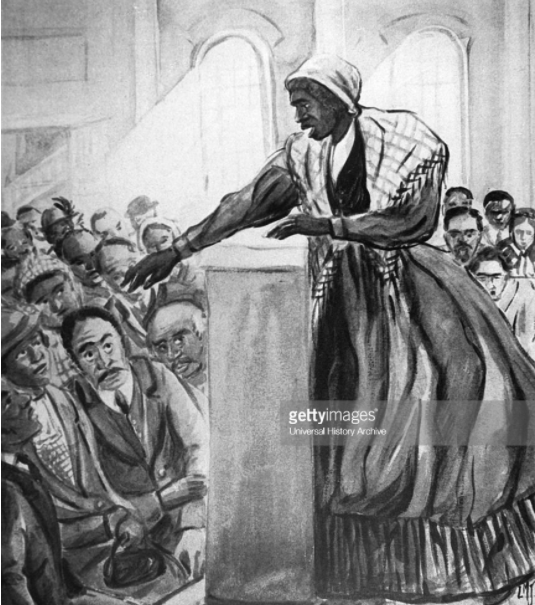
Sojourner Truth remained for about a month during her 1861 visit, and she certainly spoke at a number of places in northeastern Indiana, not only in favor of the war itself, which was not a matter of great controversy in that part of the state, but also on the evils of slavery and the necessity for its destruction. Abolition did not become government policy until President Abraham Lincoln’s preliminary Emancipation Proclamation of September 22, 1862.
Sojourner Truth’s visit emphasizes how divided was public opinion in Indiana in the late spring of 1861. Most Hoosiers were enthusiastically in favor of preserving the Union, far fewer favored the abolition of slavery, and few of those would have welcomed freed slaves to live in Indiana. Although it was unenforceable during and after the Civil War, Article 13 was not formally repealed until 1881. Nevertheless, despite accusations of intimidation by a drunken mob published by the abolitionist press, Sojourner Truth did speak publicly in Steuben County. She was threatened but not injured, she was protected by armed members of the Scott Township Home Guard, and she was never convicted for the crime of entering the state although obviously guilty of the charge. The Steuben Republican believed that “Negro excitement has run very high in Angola for the last ten days, very much to the discredit of the town.” Those who invited, sheltered and defended Sojourner Truth on her visits to Indiana held a much different opinion.
The author wishes to acknowledge the generous assistance of Peg Dilbone of Angola, independent researcher and Steuben County Historian.
Bibliography
Painter, Nell Irvin, editor, Narrative of Sojourner Truth. New York: Penguin Books, 1998.
Painter, Nell Irvin, Sojourner Truth: A Life, a Symbol. New York: W.W. Norton, 1996.
Steuben Republican [Angola, Indiana].
Thornbrough, Emma Lou. Indiana in the Civil War Era, 1850-1880. Indianapolis: Indiana Historical Bureau and Indiana Historical Society, 1965.
Thornbrough, Emma Lou, The Negro in Indiana: A Study of a Minority. Indianapolis: Indiana Historical Bureau, 1957.
Washington, Margaret, Sojourner Truth’s America. Urbana: University of Illinois Press, 2009.

